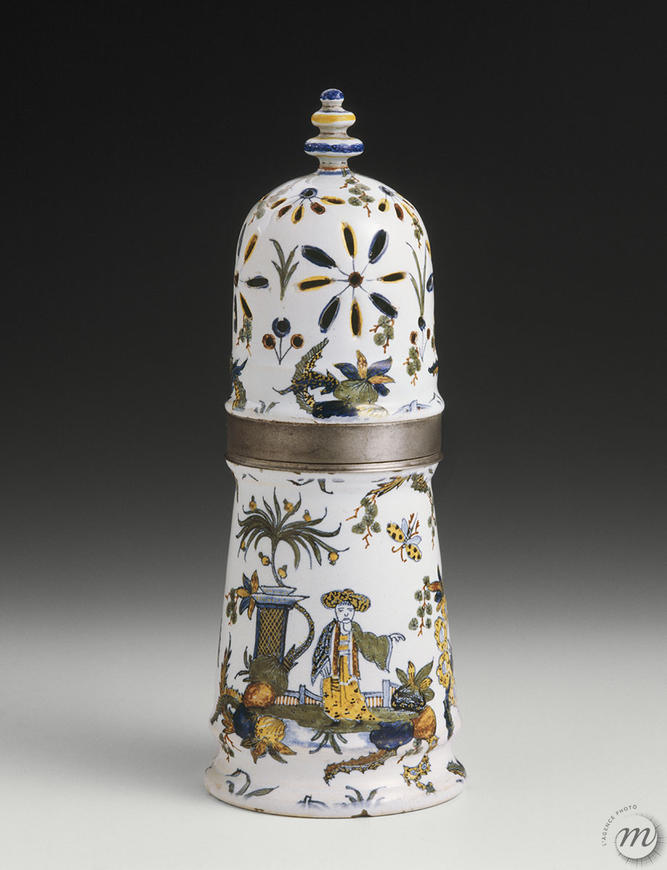This object is just a sugar bowl. An ordinary object that anyone might have in their kitchen. But look at the decoration, the care that went into making it!
This is a prestigious object. In the 18th century, sugar was a luxury product. It was consumed at every stage of a meal: with appetizers, meat dishes served with sauce, and of course desserts.
The production of sugar bowls was therefore entrusted to prestigious manufacturers. In this case, it was the Sinceny factory in Picardy, founded in 1737. The sugar bowl bears an inscription on the underside of the base: an “S” between two dots. This is the manufacturer's mark, like today's barcode, which tells us where the object was made.
Their vast production included sugar bowls, among other things, whose upper part could be removed or unscrewed to fill them with sugar.
The decoration is typical of the period and consists of chinoiserie, in other words, reinterpretations of Asian motifs. For example, we can see a palm tree and a figure wearing a wide-brimmed hat. Eighteenth-century French artists were fascinated by these exotic and novel images. For example, pagodas were built, such as the one in Chanteloup near Amboise. These towers were originally places of worship for Buddhists, but their shape was considered so original that French architects rebuilt them simply for decorative purposes!
Detail : The sugar came in the form of a loaf that had to be crushed to obtain a thick powder, hence the large holes in the upper part.

This object is just a sugar bowl. An ordinary object that anyone might have in their kitchen. But look at the decoration, the care that went into making it!
This is a prestigious object. In the 18th century, sugar was a luxury product. It was consumed at every stage of a meal: with appetizers, meat dishes served with sauce, and of course desserts.
The production of sugar bowls was therefore entrusted to prestigious manufacturers. In this case, it was the Sinceny factory in Picardy, founded in 1737. The sugar bowl bears an inscription on the underside of the base: an “S” between two dots. This is the manufacturer's mark, like today's barcode, which tells us where the object was made.
Their vast production included sugar bowls, among other things, whose upper part could be removed or unscrewed to fill them with sugar.
The decoration is typical of the period and consists of chinoiserie, in other words, reinterpretations of Asian motifs. For example, we can see a palm tree and a figure wearing a wide-brimmed hat. Eighteenth-century French artists were fascinated by these exotic and novel images. For example, pagodas were built, such as the one in Chanteloup near Amboise. These towers were originally places of worship for Buddhists, but their shape was considered so original that French architects rebuilt them simply for decorative purposes!
Detail : The sugar came in the form of a loaf that had to be crushed to obtain a thick powder, hence the large holes in the upper part.